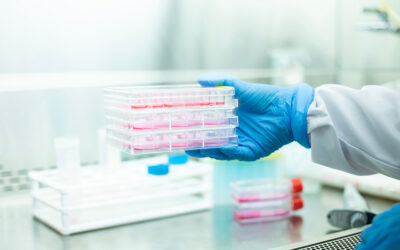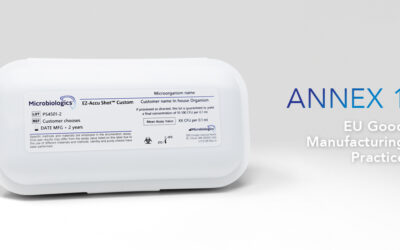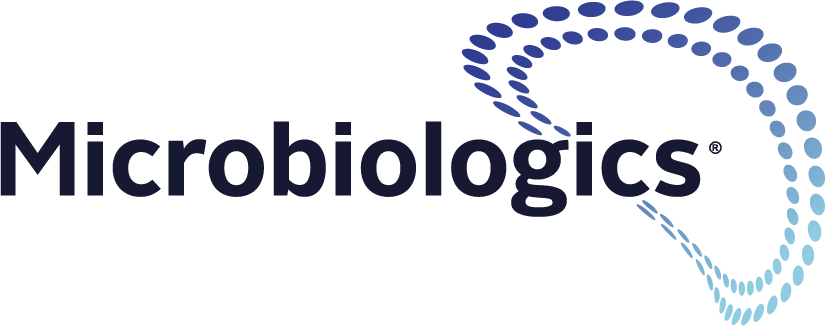When you receive a shipment of ready-to-use cultures, ensuring their suitability for use in your laboratory doesn’t have to be challenging! In this blog we’ll go over what to check and how to test for success.
According to USP <1117>, “Ready-to-use cultures should be subjected to incoming testing for purity and identity before use. The confirmation of identity for commonly used laboratory strains should ideally be done at the level of genus and species.” Besides this requirement from the pharmacopeia, it is also important to ensure that the product is meeting the manufacturer’s specifications as well.
Recovery and Manufacturer’s Warranty
Before using your ready-to-use cultures, it is important to know and understand the manufacturer’s warranty. Although each ready-to-use culture may be designed to work for a specific test, such as Growth Promotion Testing (GPT), not all are warranted to recover or perform the same way. Begin by locating the Instructions for Use for the ready-to-use culture you have chosen. Read it through carefully and make sure you understand the warranty and how to use the product. If you have any questions, always reach out to their Technical Support teams! Next, gather all the materials you need to set-up the product for use; it is also acceptable to perform GPT at the same time as incoming inspection, especially if you are testing in parallel with a previously approved lot of media and a new lot of media.
In the case of GPT, the counts on the previously approved lot will be used to:
- Confirm the ready-to-use culture is meeting manufacturer’s warranty
- Verify the culture delivers no more than 100 CFU to be compliant with pharmacopeial requirements
- Provide the standard for calculating the factor of two recovery range for GPT
It can be very tempting to use the recovery reported on the Certificate of Analysis (CoA) instead of counts on a previously approved lot of media to calculate the factor of two recovery range. Keep in mind, however, that the values the manufacturer provides on the Certificate of Analysis (CoA) or even product labeling are the numbers obtained at the manufacturing facility. The methods and materials they use may not be the same as those in your laboratory, which introduces a new variable to your GPT. For GPT, it is important to minimize experimental variables so you can focus on the one variable you are trying to measure: Media Performance.
Once you have verified that the product is delivering the correct concentration for GPT or other tests, as well as meeting the manufacturer’s warranty, you now need to confirm the culture’s identity.
Identification and Purity
Once the culture is grown, you can now perform identification tests to confirm the culture provided to you is what is claimed on the label. Per the USP and other pharmacopoeias, identification should be done at a minimum to the genus level. However, if possible, identification to the species level will provide you with more information regarding the strain’s identity.
For identification, there are many different types of tests that can be done to confirm the identity. USP <1113> Microbial Characterization, Identification, and Strain Typing can be used to help you determine what types of technologies to implement to confirm the identity. Per this chapter and depending on the strain, one or more of the following categories of tests and technologies can be employed:
Phenotypic
- Morphological
- Observation of the colony morphology on agar plates and microscopically
- Is the Gram reaction correct for the strain on the label?
- Do the colonies have the right shape or color on a specific agar type?
- Observation of the colony morphology on agar plates and microscopically
- Physiological
- Oxygen tolerance
- Optimum temperature ranges
- Biochemical tests
- Carbohydrate oxidation or fermentation, enzyme patterns, and carbon utilization
- API Strips
- Vitek 2 Panels
- MALDI-TOF Mass Spectrometry
- Fatty acid profiles by gas-liquid chromatography
- Carbohydrate oxidation or fermentation, enzyme patterns, and carbon utilization
Genotypic
- DNA base ratio (G + C content)
- DNA hybridizations
Phylogenetic
- Alignment of 16s or 23s rRNA sequences of the ready-to-use culture with known type strain sequences
- DNA – DNA hybridization
It goes without saying that each method you use for identification should be verified to ensure fitness for use, accuracy, and reproducibility.
Conclusion
Once you have confirmed the strain’s identity and its conformity to the manufacturer’s warranty and requirements of the pharmacopoeia, you are ready to use it in your laboratory!
Ready-to-use & easy-to-use
To make this process even easier on the laboratory staff, choose well established and respected ready-to-use cultures, such as Microbiologics’ EZ-Accu Shot™ products. For more information, visit our website at: https://www.microbiologics.com/item-type/Product/product-format/EZ-Accu-Shot
References
<1113> MICROBIAL CHARACTERIZATION, IDENTIFICATION, AND STRAIN TYPING. (2020). In United States Pharmacopeial Convention Committee of Revision (Ed.), USP-NF Online (43rd ed.). United States Pharmacopeial Convention.
<1117> MICROBIOLOGICAL BEST LABORATORY PRACTICES. (2020). In United States Pharmacopeial Convention Committee of Revision (Ed.), USP-NF Online (43rd ed.). United States Pharmacopeial Convention.






0 Comments